18 products
-
Raw Puer Tea Cake - COLORFULTEA
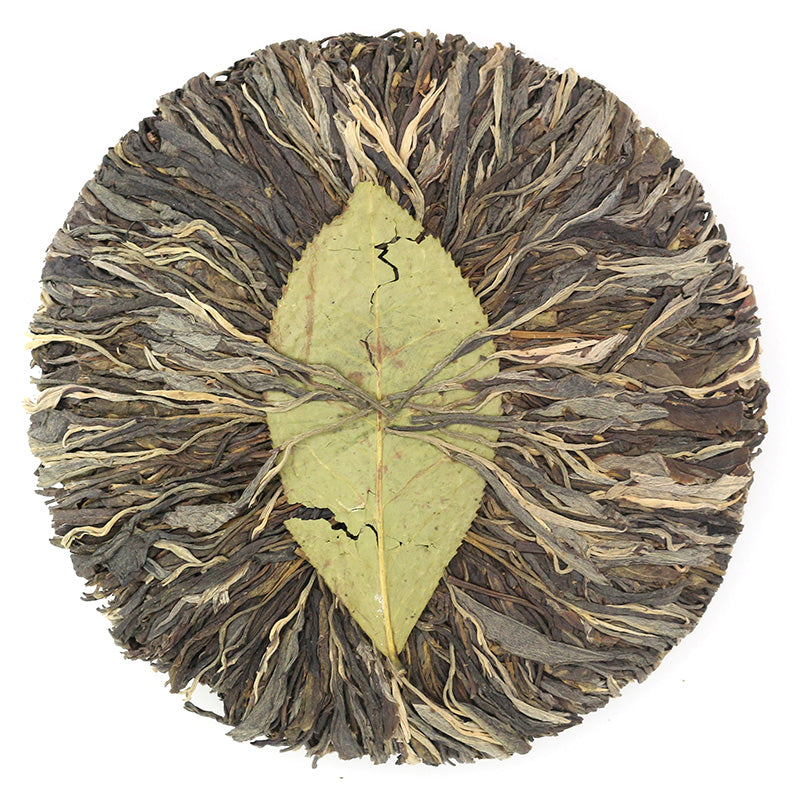 Vendor:Raw Puer Tea Cake - COLORFULTEACOLORFULTEA
Vendor:Raw Puer Tea Cake - COLORFULTEACOLORFULTEA- Regular price
-
$25.98 USD - Regular price
-
- Sale price
-
$25.98 USD
Quick view
-
Ripened Puer Tea Cake - COLORFULTEA
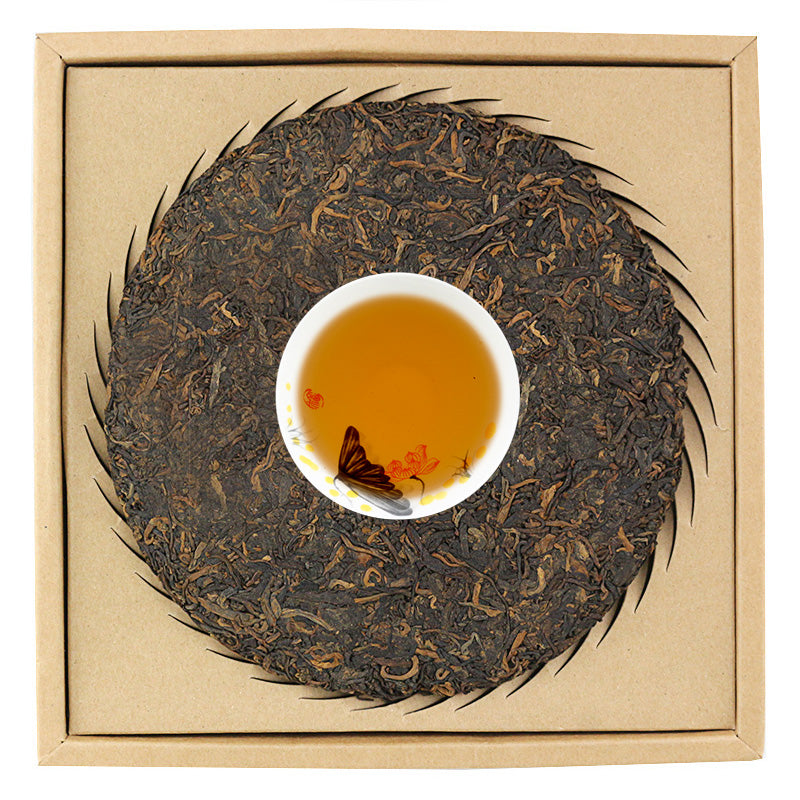 Vendor:Ripened Puer Tea Cake - COLORFULTEACOLORFULTEA
Vendor:Ripened Puer Tea Cake - COLORFULTEACOLORFULTEA- Regular price
-
$35.20 USD - Regular price
-
- Sale price
-
$35.20 USD
Quick view
-
White Tea Puerh - COLORFULTEA
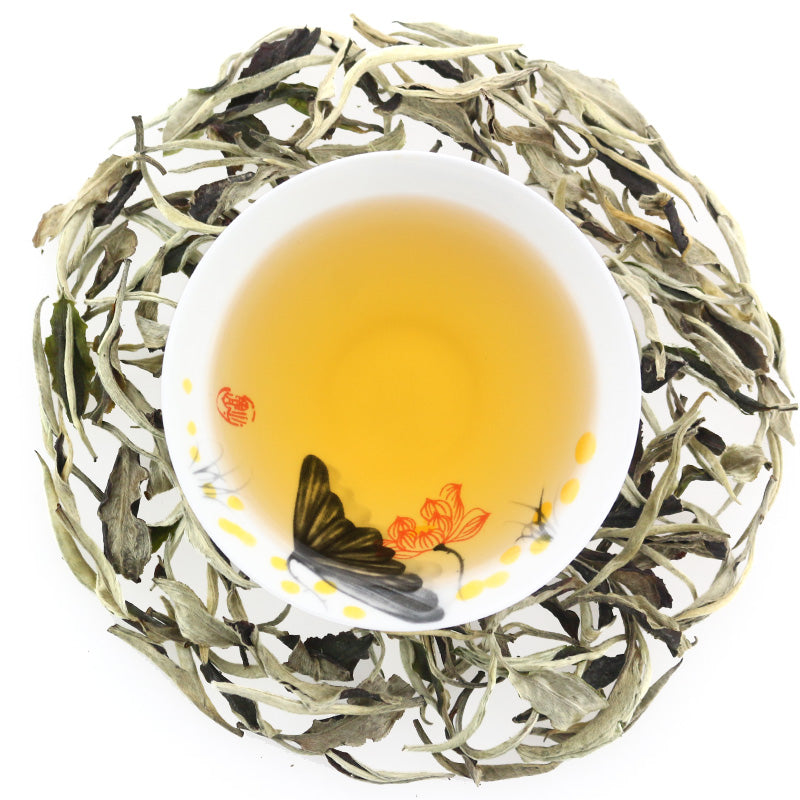 Vendor:White Tea Puerh - COLORFULTEACOLORFULTEA
Vendor:White Tea Puerh - COLORFULTEACOLORFULTEA- Regular price
-
$4.90 USD $26.98 USD - Regular price
-
- Sale price
-
$4.90 USD $26.98 USD
Quick view
-
Aged Puer Tea - COLORFULTEA
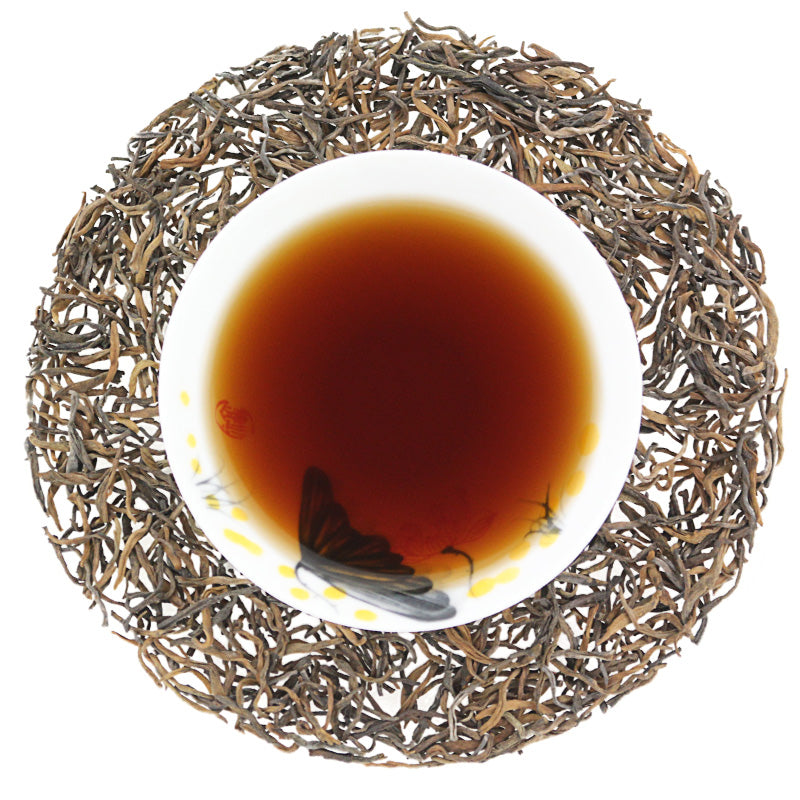 Vendor:Aged Puer Tea - COLORFULTEACOLORFULTEA
Vendor:Aged Puer Tea - COLORFULTEACOLORFULTEA- Regular price
-
$4.90 USD $34.98 USD - Regular price
-
- Sale price
-
$4.90 USD $34.98 USD
Quick view
-
Young Ripened Puer Tea - COLORFULTEA
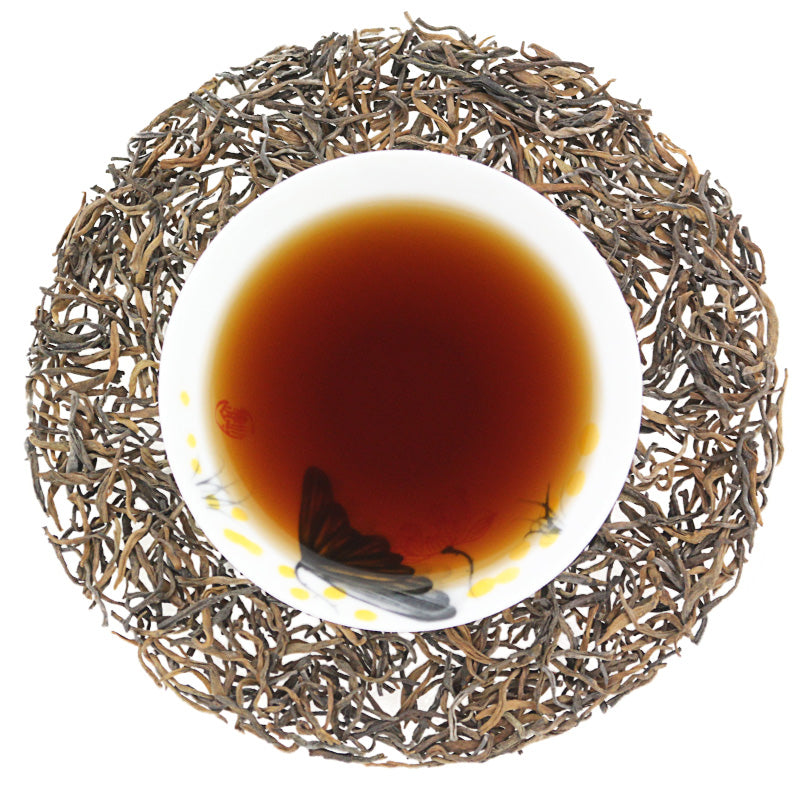 Vendor:Young Ripened Puer Tea - COLORFULTEACOLORFULTEA
Vendor:Young Ripened Puer Tea - COLORFULTEACOLORFULTEA- Regular price
-
$4.90 USD $34.98 USD - Regular price
-
- Sale price
-
$4.90 USD $34.98 USD
Quick view
-
Raw (Sheng) Puerh Tea - COLORFULTEA
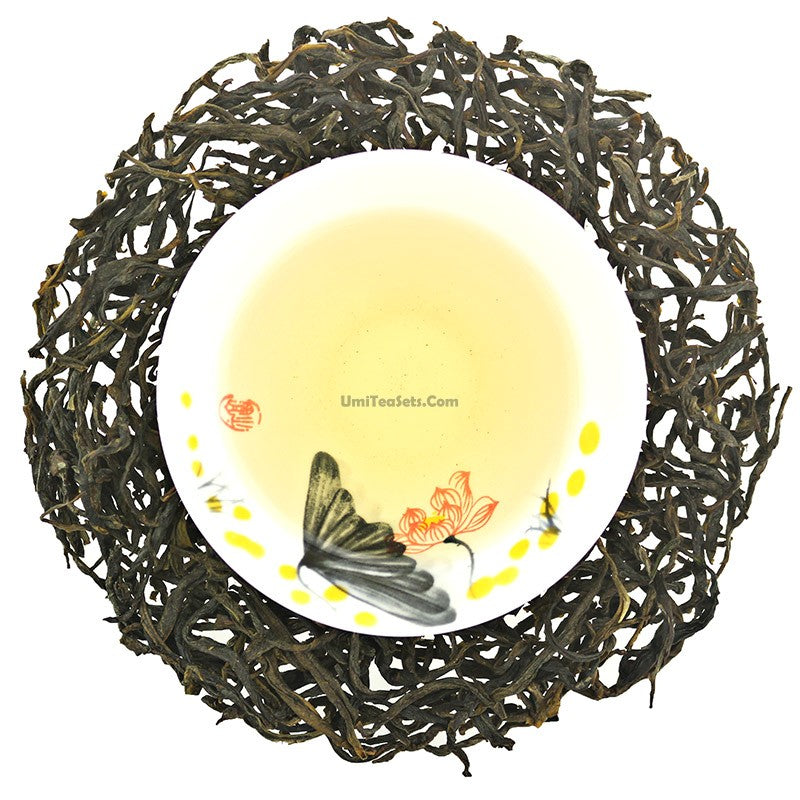 Vendor:Raw (Sheng) Puerh Tea - COLORFULTEACOLORFULTEA
Vendor:Raw (Sheng) Puerh Tea - COLORFULTEACOLORFULTEA- Regular price
-
$4.90 USD $29.98 USD - Regular price
-
- Sale price
-
$4.90 USD $29.98 USD
Quick view
-
Xinhui Citrus Ripe Puerh Tea - COLORFULTEA
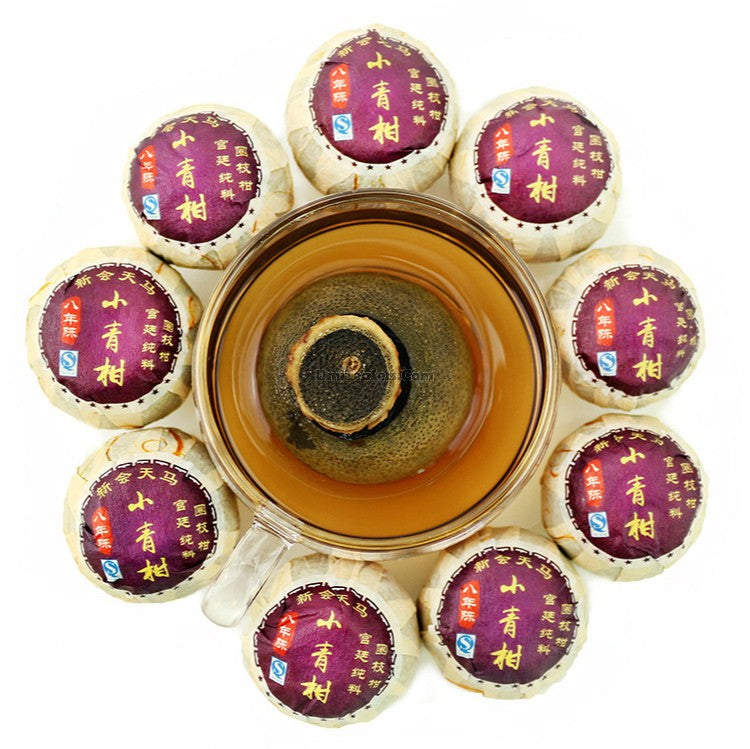 Vendor:Xinhui Citrus Ripe Puerh Tea - COLORFULTEACOLORFULTEA
Vendor:Xinhui Citrus Ripe Puerh Tea - COLORFULTEACOLORFULTEA- Regular price
-
$4.90 USD $33.98 USD - Regular price
-
- Sale price
-
$4.90 USD $33.98 USD
Quick view
-
Dark Puer Tea - COLORFULTEA
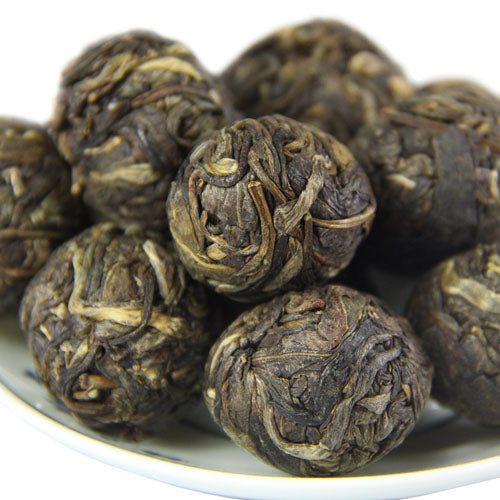 Vendor:Dark Puer Tea - COLORFULTEACOLORFULTEA
Vendor:Dark Puer Tea - COLORFULTEACOLORFULTEA- Regular price
-
$4.90 USD $39.98 USD - Regular price
-
- Sale price
-
$4.90 USD $39.98 USD
Quick view
-
Raw Toucha - COLORFULTEA
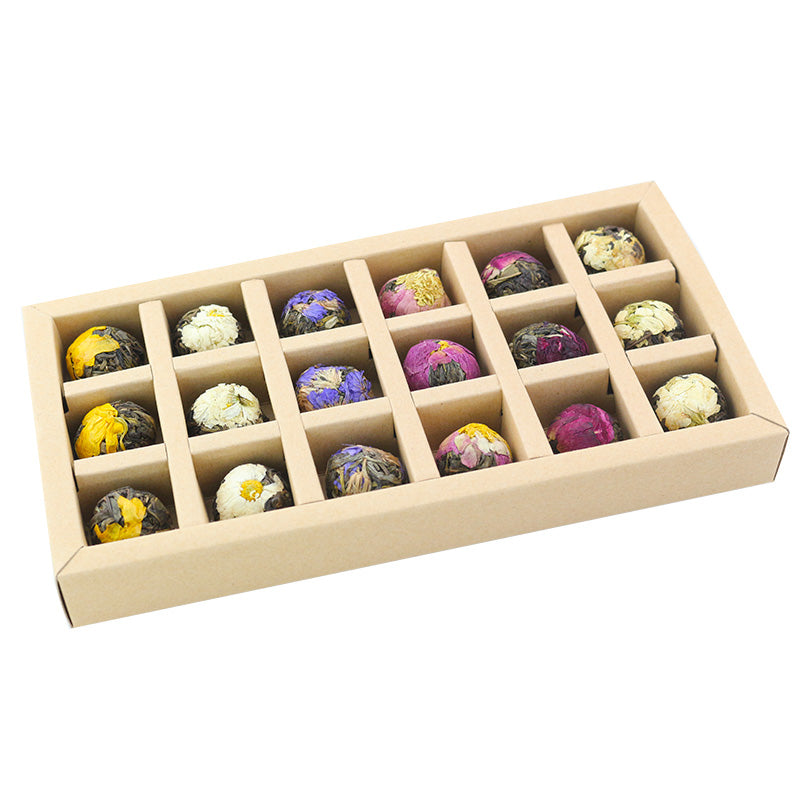 Vendor:Raw Toucha - COLORFULTEACOLORFULTEA
Vendor:Raw Toucha - COLORFULTEACOLORFULTEA- Regular price
-
$25.87 USD - Regular price
-
- Sale price
-
$25.87 USD
Quick view
Puerh Tea
Famous for their history and curative properties, Pu er teas are post-fermented teas whose oxidation is not enzyme related. Also known as "aged teas", "post-oxidized teas," "black teas"(by the Chinese) or even "dark teas," they owe their specific properties to their processing method, which gives them the advantage of improving over time. They can be traced back to the Tang dynasty (618-907), when tea was boiled and added to soup as a flavoring.
They derive their name from the town of Pu er in Yunnan Province (in southwestern China), where growers from the neighboring mountains brought their harvests to be sold and sent elsewhere in China or in more far-flung regions, such as Tibet and Mongolia. Because of the high demand for tea and the fact that it was transported on horseback, the local population devised a processing method that consisted of compressing the tea into cakes of different sizes and shapes.
During the Song dynasty, the town of Pu er was a major trading center for tea: all the teas sold there were called "Pu er;" whatever their particularities. Today, although Pu er teas are still produced mainly in Yunnan Province, other regions, such as Guangxi, Anhui, Guangdong and northern Vietnam produce them too.
In a bid to prevent others from usurping the appellation, the Bureau of Standard Measurement of Yunnan Province (2003) defined Pu er teas as "fermented green tea products obtained from the large leaves of tea trees harvested in Yunnan Province." Although not all experts agree with this definition, it is justified in part by the variety of tea tree, Da Ye ("large leaves"), grown in Yunnan. The best Pu er teas come from the famous mountains located in Xishuangbanna. Some of these mountains, including the well-known Youle, Banzhang, Manzhuan, Yiwu, Mensong, Banpen and Yiban, are still renowned for their tea production.
Considering it takes several years for the aging process to improve the taste of these teas, aged Pu er teas are becoming ever more rare, and collectors are willing to spend a fortune to obtain a cake of aged Sheng. Rarity created a sudden rise in price that many investors saw as an opportunity. Therefore, at the beginning of 2000, plantations were springing up like mushrooms, as mountainsides were cleared to make way forthe cultivation of tea trees dedicated to the production of Pu er teas. However, this furious growth of Sheng Pu er peaked in the fall of 2007, when the speculative bubble burst. Seeing the market collapse due to the inflated prices, the new investors pulled out Since then the Pu er market has trended toward stabilization. However, the market for aged Pu er teas was not affected by this phenomenon. Because of the rarity of this product, demand and prices remain high.
To first step in the process to make Pu er tea is to produce what is called maocha.
PICKING
As is the case with other teas, the quality of a Pu er tea depends in part on the plant material used. A grading system from one to nine defines the size of the leaves that are used.
WITHERING
Processing Pu er teas begins with withering. To do this, the leaves are spread in the sun for a few hours. In industrial processing, the leaves are spread on racks in a room and heated with hot-water radiant heat.
HEATING
Small-scale heating takes place in pans and lasts for two to three minutes. The batches of leaves are far bigger that those used when producing green teas. The pans are usually heated by means of wood fires.
ROLLING
The leaves are then rolled by hand on a bamboo mat until they form a large ball. In industrial processing, the leaves are rolled in the same type of round roller press as used for black teas or for curly-leaf green teas.
SECOND HEATING
Sometimes the leaves are heated a second time in the pans, also for two to three minute.
SECOND ROLLING
The same method is used as for the first rolling: by hand on a bamboo mat (the traditional method) or rolled in a round roller press (the industrial method).
DRYING
After the second rolling, the leaves are dried in the sun or in a temperature- and moisture-controlled greenhouse. In industrial processing, the leaves are dried on a conveyor belt that passes through a heating machine.
SORTING
Next, all residue is eliminated from the leaves by means of manual sorting.
After all these stages, the maocha is ready. Often, the peasants who produce it sell it to other specialized processors who then compress the leaves into different shapes. Although the highest-quality leaves are usually reserved for the production of Sheng, the maocha can be used to produce both types of Pu er teas. However; from this stage onward, the processing methods of Sheng and Shou are different.
Puerh tea is called ‘black tea’ by the Chinese and was exclusive to China for centuries. Puerh tea is thought to have various positive health benefits and is consequently becoming more and more popular throughout the world. Named from the market town where tile teas have been traded for hundreds of years, puerh teas have an earthy, mature character and are said to be excellent for the digestion, to ease stomach upsets, to help reduce cholesterol in the blood and to help those on a diet to lose weight more easily.
Traditionally, puerh teas come from Yunnan Province in south-west China and are made from a large-leafed variety of Camellia sinensis that grows in the area. The particular varietal of the tea bush, along with the Yunnan soil and the climate in the region produce teas that have a rich, woody, slightly earthy character and when the leaf is matured or aged by a special process in special conditions, it acquires an elemental, slightly ‘mouldy’ character.
Puerh teas are classified into two types – ‘raw puerh’ (some people refer to this as green or semi-green puerh but these terms are not correct) and ‘cooked puerh’ (also sometimes known as finished or ripe puerh). Raw puerh is made by withering, pan-firing to kill the enzymes, rolling and kneading, then sun-drying for high quality leaf or air drying for less expensive teas. The then immediately be steamed and compressed into round cakes or flat rectangular slabs or it may be left loose. The tea is then allowed to mature for a year or more before being compressed. The maturation period allows a slow, natural fermentation in naturally warm and humid, well-ventilated conditions. Because of the water content in the tea and the oxygen in the air, the leaf slowly ferments (this really is fermentation and is different from the oxidation that takes place during the manufacture of black and oolong teas) and turns the leaf from green to red and then to dark brown. The loose or compressed teas are then aged for up to 50 years in conditions where humidity and temperature are carefully controlled to encourage the puerh to develop a mature, complex, earthy flavour and aroma. As the tea ages, the less astringent and bitter and the sweeter and smoother the flavour becomes. The best of these raw puerhs sell for thousands of dollars ($8000/£4000) and are often now bought as investments.
Cooked puerh at best offers a good mellow cup but without the complexity and sappiness of the fresh leaf.
When the discs or cakes of puerh are ready for sale, they are individually wrapped in tissue paper and then placed singly into presentation boxes or stacked in sevens and wrapped in bamboo leave or grasses to protect the quality.
Technically, pu'er tea belongs to the family of dark tea, for it is richly fermented and kept long to improve its quality. In reality, pu'er is a tea unto itself. It's a matter of origin pu'er is the dark tea of Yunnan, "South Cloud" land, where Tibetan foothill runs down to tropical valley, producing soil as unique and multifarious as the many indigenous tribes it supports. Thus, pu'er tea, the quintessence of Yunnan earth, is complex and variegated enough to support a massive bourse. Fortunes rise and fall on pu'er speculation, speculation based not on variety, for pu'er has only two - shou [show] and sheng [shung], long and short fermented, respectively. Rather, like fine wines, pu'er is valued for its vintage and house of manufacture. Puer tea is a sort of traditional teas in China, it's famous in history and it taste great. The Puerh Tea, Yunnan province special tea, our Puer tea has the unique quality because of the special material, environment, processing technology and storage conditions. Our Puerh tea is antioxidant and helpful for losing weight and improving digestion. Choose the one you like!
The dark tea is a post-fermented tea, a unique tea variety of China, It is made with coarse and old raw materials through a long period of piled fermentation. The finished tea is oily black or blackish brown. The tea soup is orange or orange red. It is mainly produced in Hunan, Hubei, Guangxi, Yunnan, and Sichuan.
The dark tea has been produced for a long time. Its processing steps include fixation, rolling, piling, and drying. Of them, piling is the most important step.
Among the major dark teas are the Pu'er Tea of Yunnan, Heimao (Black Hair) Tea of Hunan, Laoqing (Old Black) Tea of Hubei, Nanlubian (Southern Roadside) Tea and Xilubian (Western Roadside) Tea of Sichuan, and Liubao (Six-castle) Tea of Guangxi. Of them, the Pu'er Tea of Yunnan is the most famous. It is a kind of Yunnan big-leaved tea. Yunnan broad-leaf tea contains far greater aquatic extract, GTP, and catechin than other famous teas of China. It therefore shows greater efficacy in resisting aging. In addition, several kinds of helpful bacterial groups will grow during fermentation. These bacterial groups can reduce the absorption of triacid glyceride and sugar by small intestine and boost fat decomposition by ferment. Therefore, the fermented Puer Tea can also play an effective role in reducing weight.
Puer Tea under pile-fermentation
Piling refers to the process during which the sunned semi-made tea is piled up, watered, and stored in an environment with a temperature of over 25℃ and a relative humidity of 85% to promote its fermentation. Piling is for speeding up the aging of the Puer Tea. It is a key step to form and consolidate the special quality of the Puer Tea.
Classification of the Puer Tea
According to the method of production, the Puer Tea can be divided into two kinds: unfermented and fermented. The unfermented tea is naturally dried after picking and its caky tea is mostly green and dark green, and a few are yellowish red. The tea tastes strong. After several yearsfstorage, it will turn mild and produce green tea soup. Most of the Puer Tea for collection is unfermented. The fermented tea has gone through pile-fermentation and its caky tea is mostly black or reddish brown. Some tea buds are dark golden. Most fermented Pu’er Tea has the piling smell (mold smell) and tastes mild. The tea soup is golden red.
According to the storage modes, the Puer Tea can be divided into dry-warehouse Puer Tea and wet-warehouse Puer Tea, Dry-warehouse Puer Tea is made through natural fermentation in a dry and well-ventilated warehouse. It retains the taste of the Puer Tea rather completely and has a high collection value since it acquires stronger aroma through storage. Wet-warehouse Puer Tea is made through sped-up fermentation in a damp warehouse. This tea will easily become moldy due to speedy aging process and is harmful to drinker's health.
According to the appearance, the Pufer Tea can be divided into the following types: caky tea, bowi-shaped tea, brick-shaped tea, melon-shaped tea, bar tea, and bulk tea.
Puer caky tea
The caky tea is also known as the Seven-son Caky Tea. Shaped like a flat round disc, each piece of the Seven-son Caky Tea weighs 375 grams. Seven tea cakes are packed in one box. Seven times seven is forty-nine, representing flourishing posterity.
Bowl-shaped Puer Tea
The bowl-shaped tea is made through steam-pressing. Normally, each piece weighs 100 grams or 250 grams. In recent years, some mini bowl-shaped teas are produced and each piece weighs two to five grams.
Melon-shaped Puer Tea
The Puer Tea can be compressed into melon shapes in different sizes. The weight of each piece ranges from 100 grams to several hundred kilograms.
Brick-shaped Puer Tea
Brick-shaped Puer Tea is compressed into its rectangular solid or cube shape and each piece weighs 250 to 1,000 grams.
Tea Set Suitable for Brewing the Puer Tea and Dark Tea
Representatives of the dark tea include the Pu'er Tea of Yunnan, Liubao (Six-Cattle) Tea of Guangxi, and Chunjian (Spring Tip) Tea of Hunan. The dark tea can be brewed or cooked. The ceramic tea set or purple sand tea set with coarser sand grains is suitable for brewing the dark tea. The adsorptive sand can help remove the undesired taste formed during tea storage and accentuate the features of the dark tea.
How To Select Puerh Tea
During China's Qing Dynasty, Puerh tea was already very well known. According to the Dianhai Yuheng Zhi (Annals of Dianchi and Erhai Lakes): "Puerh tea is known throughout the world. It is produced on the six tea mountains of Puerh… covering an area 800 li (1/2 km) in diameter. Several tens of thousands of people live in the mountains producing the tea. Merchants come to purchase the tea and transport it far and wide." Sadly, China's national strength declined and tea-drinking traditions were lost. Puerh tea, which requires careful aging, seemed to be even more forgotten. This cultural treasure slept for nearly one hundred years. We must look back to our great- and great-great-grandparents' generation to find awareness that Puerh was considered a top-quality famous tea.
Puerh was not at all fashionable in the 1980′s and, consequently, was sold to Guangdong and Hong Kong tea houses to serve as low-grade kettle tea. This can be explained simply by the fact that virtually no one understood or saw the value of Puerh. Even if high-quality Yunnan tea leaves were offered, no one showed up to purchase them. Because of this loss of tradition, the vibrant tea market streets of Yiwu grew quiet and virtually no traditional Puerh cakes were pressed on the famous tea growing mountains. Only after the release of Zhen Chun Ya Hao in 1996 and the popularity of Yi Chang Hao in 1999 did the attention of China return to Puerh. During the 1980's and 1990′s, tea farmers still had to survive and labored to provide the necessities of life. They had no choice but to sell their tea leaves to tea factories for fermentation and use in the production of ripe Puerh tea, which was then sold on the market. A small quantity of high-grade tea was pressed into raw Puerh cakes to satisfy the requirements of Hong Kong tea sellers. It was placed into wet storage or aged several years before being split apart for sale in loose-leaf tea, thereby satisfying the tea-drinking tastes of Hong Kong residents.
Looking back twenty years from the perspective of today's Puerh tea craze, the several hundred cases of tea pressed each year in traditional 84-cake quantities for sale to Hong Kong seems like an incredibly small quantity. At the time, however, this was all the market could bear. In fact, there was no market at all to speak of. In the eyes of consumers, Puerh was still perceived as a "stinky tea." The eventual resurgence of Puerh culture was brought about by the arrival of fully aged old Puerh cakes, led by the red and blue stamp teas, combined with the efforts of Taiwanese tea lovers and the gradually increasing power of China. Puerh regained its former glory and has taken its place as an important part of the daily necessities of everyday life.
A pot of exquisite Puerh relaxingly enjoyed after dinner (regardless of the specific type) is enough to slightly reduce the pressure of modern day-to-day life. Consequently, economics permitting, Puerh tea aficionados are driven to seek out diverse and high-quality tea products. This has given rise to the question of how to select Puerh teas. Puerh tea was not at all popular during the 1980′s and was only used as low-grade, large-kettle tea in the tea houses of Guangdong and Hong Kong.
The revival of Puerh culture and corresponding developments have brought forth a multitude of different styles. They can roughly be classified as: large factory, small factory, home workshop, large tree, plantation tea, pure material, blends, famous mountain tea, dry storage, wet storage, natural home aging, raw, ripe, pressed cake, "tuo" style, brick style, loose leaf, gift box, cardboard tube, bamboo tube, wooden box collectibles, and event memorabilia. When viewed together, the selection seems overwhelming. Although different, the above types of tea are all Puerh. After factoring in aged Puerh from different years, the number of types of Puerh teas grows from nearly one thousand to well over ten thousand. Superficially, this situation appears to provide an excess of choices. However, little selection is actually feasible. You cannot personally sample the majority of the teas available in the market, let alone all of them, to decide which type of Puerh is most appropriate for you.
When confronted with the vast selection of Puerh available in today's marketplace, how can new tea drinkers choose the most appropriate teas? This question differs depending on whether the tea is intended for immediate consumption or for aging or for investment. This has become an open question in the tea community. How can tea drinkers select the Puerh tea that is most appropriate for them?
Today, Puerh tea products are as varied as the stars in the sky. Even if a tea shop were willing to brew all of its suitably priced teas for consumers to sample, you could not possibly try it all within the space of a few days before buying the tea best suited to your tastes. This task becomes even more daunting after realizing that there are thousands of tea shops in the marketplace.
In reality, buying Puerh tea to drink (rather than for investment) is much like buying any other everyday consumer item. Before making a purchase, one is likely to consult the experience of others. This is much like purchasing a car. You cannot possibly drive all of the cars on the market before deciding which one to buy. You most likely first settles on a budget and then seek out reference information in the form of magazines or web sites. After comparing multiple models and looking at outward appearances, you may seek out the opinions of others who have driven the cars you are drawn to. Then you are likely to personally take several models out for test drives. Finally, after considering which car offers the best deal, you place an order. Settling on a budget is fundamental. After the budget is fixed, you seek out products within that price range and compare them based on value. This is a very rational type of consumer behavior.
The experience of purchasing Puerh tea is similar. Information for comparison can come from tea shops, or it can be found in magazines or on the web. Tea drinkers may also learn about teas by taking part in tea tastings, which reflect their devotion to Puerh. Basically, without spending a significant amount of time each week visiting tea shops and tasting teas, there is no way to find the best, most suitable tea. We hope that this article can help provide less experienced tea drinkers with some suggestions regarding how to recognize and select the most suitable Puerh.
1. Understand your taste
Some people prefer spicy and stimulating flavors, while others are drawn to sweet flavors. Still others do not enjoy either of these flavors but instead prefer mild and gentle tastes. Puerh provides many different types of flavors, and different people may be drawn to different teas. Those who enjoy dry stored teas may not prefer teas stored in humid conditions, and vice-versa. Some people may not enjoy either of them. Consequently, it is important to know your own flavor preferences when buying tea.
Puerh tea is somewhat complex, however, and understanding your tastes may not be sufficient. Because the flavor changes as tea ages, it is important to predict how a tea will age. To a certain extent it is also important to predict how your own tastes will change over time. Even though the quality of the tea may improve over time, you may discover after several years that you no longer like a tea that you set aside to age ten or more years ago.
An acquaintance of mine provides a good example of this. As he was first getting into Puerh, he was drawn to ripe teas and purchased them in large quantities. He bought well over one hundred cakes thinking that over the coming decades he would also primarily drink ripe Puerh teas. Who knew, however, that after several years of drinking Puerh he would come across high-quality aged raw Puerh and suddenly discover that aged raw Puerhs could have such exquisite flavor. Tasting the ripe tea he had purchased earlier, he realized that the tea that he had once viewed so highly no longer tasted good. Did the quality of the tea decline? Of course not. It was only his tastes that had changed. His collection of ripe Puerh grew less and less interesting over time.
Consequently, when looking for Puerh tea to buy, you need to look for something that will not only satisfy you as a daily drinker for the next several years. You should also try to predict just what you will enjoy in ten or even twenty years. I suggest people looking to start collecting Puerh consider broadening their range a bit. That is, purchase a number of types of tea as a precaution against changing tastes. Also, consider going a bit deeper. If you find that you really like a certain tea, you will wish you had bought more of it.
At the most basic level, we drink tea for enjoyment. No one chooses to drink something that does not taste good on a regular basis, with the possible exception of medicine. Puerh is similar. We spend money to buy tea with flavors that will appeal to us and that will make us feel good.
It is not rare for people to force themselves to drink teas that they do not like, however. What they liked at one time may not be what they enjoy in the future. As I described above, if the tea does not age well or your tastes simply change, you may end up sitting on a mountain of Puerh that does not really appeal to you (or may just not be very good). These are so-called "learning teas."
Some tea drinkers started out believing in the internet Puerh theory of "Puerh buying based on taste." After several years, they discover that their teas are somewhat lacking and begin to realize that buying "storage grade" raw tea based solely on their own taste may not be the best approach.
2. About "Puerh buying based on taste"
Several years back, numerous discussions appeared online suggesting that new tea drinkers should disregard the appearance and age of tea cakes when first starting out. They further recommended not trusting the one-sided recommendations of tea shops. Instead, tea drinkers should buy tea based on what feels and tastes good to them personally. This principle was very-popular with new tea drinkers. After all, trusting one's own mouth is far preferable to being cheated by tea sellers.
This method carries the risk, however, that new drinkers may end up cheating themselves. "Puerh buying based on taste" depends on two implicit prerequisites, which if not satisfied may lead new tewdrinkers to purchase the wrong tea. First, the novice tea drinker must be capable of predicting whether the flavor of a bitter raw Puerh will be desirable and pleasant after ten or more years of aging. Second, the tea drinkers must be able to predict whether the flavor of a tea will meet their needs after ten or more years. In other words, they must be capable of predicting their own future tastes.
Most young raw Puerh (that is, less than five years old) is bitter and immature. If the inexperienced tea drinker enjoys this type of flavor and is drawn to the green—tea-like aspects of raw Yunnan Puerh, then buying Puerh based on taste is appropriate. They understand the flavor of the tea when they spend the money to buy it. The tea they are buying and the tea they are tasting in the shop is the same as the tea they will be brewing at home in the near term. This is much like the concept in computers of "plug-and-play." If you buy a cake of raw Puerh and finish drinking it within a month, its flavor will be the same as when you first tasted it. Of course it makes sense to buy based on taste. I am confident that tea drinkers are unlikely to torture themselves by bringing home a cake of tea that tastes unpleasant for immediate consumption. Tasting the tea in the shop before buying it serves a practical purpose.
Most people who develop an interest in Puerh, however, do so after tasting aged Puerh. Many tea drinkers purchase teas that do not taste good to them at the time of purchase. They hope that after the tea is set aside for a number of years, it will turn into their own "aged Puerh." This type of purchase is driven by the following factors. First, high-quality aged Puerh is extremely expensive. It is beyond the financial grasp of the average person and is not the sort of thing that average people can afford as a consumer product. Second, home-stored aged Puerh can be guaranteed, to be clean and hygienic. One also enjoys the opportunity to experience the changes that the tea undergoes with the passage of each year.
Our concern is that novice tea drinkers will rely on "Puerh buying based on taste" to find storage-grade raw Puerh. This is due to the fact that the difference in flavor between an aged raw Puerh cake and the same tea when initially produced is huge. We are certain that many long-term tea collectors have experienced the following, that is, bringing home a large number of new teas which at first seem to be excellent, possessing pleasing flavor, and pleasant aromas. Then, after a decade or so of storage, the flavor is not at all as imagined. This is the result of collecting the wrong tea at the outset.
As We explained previously, only after ten years do you learn that the tea you have aged is not the right one and is incapable of developing an ideal flavor. Eventually, you end up buying ready-for-consumption aged Puerh from Guangdong tea sellers and discover that buying aged tea to drink actually often makes more sense than storing the tea yourself. It also takes up far less space.
3. Choose Puerh that suits you
Puerh teas of different ages and types provide different flavors and are available at different prices. Different people are likely to choose to drink different teas. Consequently, tea drinkers should first determine the following: are you buying the tea to drink immediately or to store for a number of years before drinking? Afterwards, settle on a budget and select the best tea that fits into your budget.
When tasting a tea at a tea shop, pay particular attention to whether its fragrance, liquor, hui gan (returning sweetness), and hou yun (throat rhythm or aftertaste) suit your taste. If you like the flavor of the brewed tea and would like to take the next step and purchase a quantity of the tea for storage, do not be overly anxious. First buy a small quantity or a single cake to take home for more careful tasting. Everyone brews tea differently, and the method used by the tea seller may be different than your own. Sometimes you may find that a tea brewed one way in the shop tastes completely different when you brew it yourself. Consequently, although perhaps a bit more expensive, it is best to buy a small amount of the tea for further investigation. Even if the tea is truly unsuitable, you have only wasted a single cake and not an entire tong or case.
Only return to buy a tong or a case of the tea if you still find the flavor acceptable after drinking it for a week or two. What determines whether the flavor is acceptable? Quality tea exerts its own type of attraction. After finishing it, you want to keep drinking. This method can lower the risk of buying a large quantity of unsuitable "learning" tea.
Wet Storage Puerh
Wet storage Puerh represents a compromise over traditional aged Puerh based on considerations of time, money, and flavor. Raw Puerh is placed in a relatively humid environment for a certain period of time to quickly mellow the bitter raw tea through the operation of humidity and time. The tea can then be sold in the market with no need to wait for twenty or thirty years. Consequently, it can be sold at a lower price.
As with all things, however, you get what you pay for. Reasonably priced wet storage Puerh does raise certain concerns for the tea drinker. For example, some wet stored teas have uneven flavor. The flavor of the first cake in a tong may differ from the fourth cake, because the position of the tea during the storage process affects the tea's exposure to moisture. This leads to lack of uniformity. Even more troubling, the flavor of the tea on the outside of a single cake may be significantly different from that of the tea in the center of the cake.
In addition, the most crucial aspect of wet storage Puerh production is how, after removing the tea from storage, to rid it of cang wei (the musty flavor resulting from wet storage), which many find unpleasant, and turn it into the very desirable flavor of aged Puerh. In the past, when Puerh sales were much lower, Hong Kong tea sellers had plenty of time to place the tea in a dry, cool, and well-ventilated location. They could take advantage of time to dispel the tea's musty aroma and transform it into aged flavor before selling the tea. Now, Puerh is much more widely sought after. Experienced tea drinkers are likely to purchase the tea at a reduced price before the flavor of wet storage has had a chance to dissipate. Because it is cheap and they understand how to remove the musty aroma, they have no reservations about buying the wet storage tea. Tea sellers subsequently discovered that tea drinkers were willing to buy wet storage flavored teas as long as a discount was offered. As a result, they began selling tea products that still had this flavor. As long as consumers purchased the tea, they were satisfied. They could offer the tea at a slightly reduced price and let the buyers worry about removing the cang wei.
Sadly, some retailers who do not fully understand tea are unskilled in removing the tea from storage. Even though an intense cang wei remains, they nonetheless offer the tea for sale. They even claim that this tea is so-called "aged Puerh."












